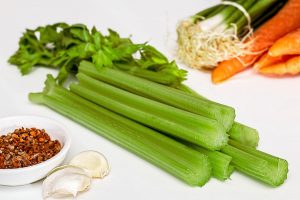 If you thought all foods containing carbs were bad, think again. You need carbohydrates in your diet and many of those are good carbs, ones that provide both energy and the nutrition your body requires. Low carb diets don’t cut out all carbs, just carbohydrates that are in highly processed foods, starchy foods, those high in sugar and additives. There are three categories of carbohydrates, fiber, sugar and starches. You need carbohydrates to fuel the body, by being broken down for energy.
If you thought all foods containing carbs were bad, think again. You need carbohydrates in your diet and many of those are good carbs, ones that provide both energy and the nutrition your body requires. Low carb diets don’t cut out all carbs, just carbohydrates that are in highly processed foods, starchy foods, those high in sugar and additives. There are three categories of carbohydrates, fiber, sugar and starches. You need carbohydrates to fuel the body, by being broken down for energy.
What is a low carbohydrate diet?
Low carbohydrate doesn’t mean NO carbohydrates. Keto or low carb diets limit the number of calories from carbohydrates. That means you have to choose food more carefully. If you choose a sugary treat, like a candy bar, it is high in calories, but doesn’t contain nutrients, like a tomato, which is lower in calories, but still has fewer carbs than a candy bar and has far more nutrition. Studies show there are benefits from low carb diets, like weight loss, improvements in HDL cholesterol, blood pressure and blood sugar levels.
It’s all about the type of carb you eliminate from your diet.
What’s the difference between a good and bad carb? It’s about the nutrition per gram. Some high carbohydrate foods, like sugar and highly processed white flour have few benefits and not only pack on the pounds contribute to the potential for heart disease. Food high in sugar and white flour are classed as bad carbs, while whole foods, like carrots, celery, red pepper and other vegetables are mostly on the good carb side. Some vegetables that are starchy, like potatoes, peas, corn and squash, fall in between the two.
Good carbs are healthy foods that provide more than just energy.
Man has always had carbs in their diet, but not the processed types we see today. Carbohydrates provide easy access to energy. Protein is processed slowly and takes time to get into the blood stream. Fats slow the digestive process. Bad carbs provide quick energy that can spike blood sugar levels. Fiber-rich carbs like fruits and vegetables, which contain other nutrients, still provide the energy, but the glucose is released at a slower rate, so you don’t have blood sugar spikes.
- If you go on a low carb diet or cutting out carbs, focus on junk foods that contain high amounts of additives, refined flour and sugar. Pile your plate with colorful vegetables and fruit. The more colors, the more variety of nutrients you get.
- Always go by net carbs. Some foods that are high in fiber that isn’t digested are actually low in net carbs, when you identify just how many carbs your body can use as a source of energy.
- If you eat a cup of green beans, it contains 8 grams of carbs, but only 4 net grams that your body can use. A cup of sugar contains 199.96 grams of carbs and all of them are available for use since there’s no fiber.
- Not all grain products are bad. Whole grain products offer many nutrients and benefits the same products made from processed refined flour doesn’t offer.
For more information, contact us today at Rising Fitness Gym
